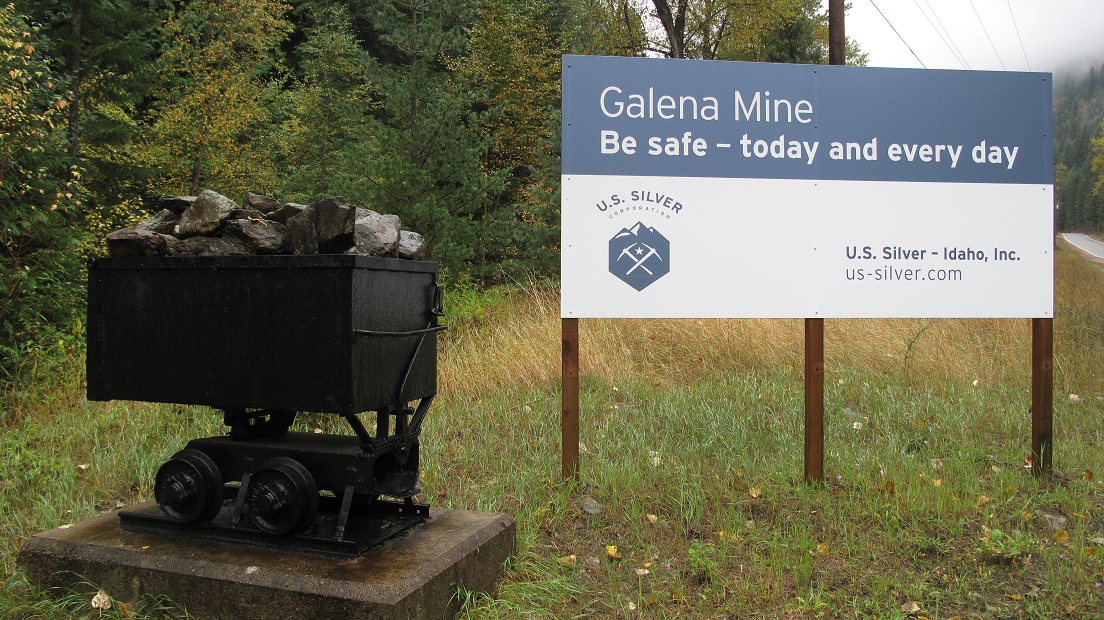
 











|
Signature Sponsor


By James Sharpe
January 5, 2016 - The top brass at the Mine Safety and Health Administration (MSHA) have been forced to intervene to quell an embarrassing uproar that began with a regular inspection at a Western silver mine and evolved into an angry miners’ petition, secret recordings, a whistleblower complaint, retaliation, and multiple investigations, including by a member of Congress. Soon after inspector Rod Gust arrived at the Galena Mine in Idaho in November 2014 and before a single citation had been written, miners and safety personnel began to complain about his aggressive behavior. Complaints were made to a second inspector, Scott Amos, who suggested to Gust that he adopt a more cooperative approach, to no avail. Amos then passed the miners’ concerns on to the inspectors’ Boise Field Office Supervisor, Ron Jacobsen, but with little apparent effect there either. When the inspection ended about six weeks later, at least 117 miners had become so incensed, they signed a petition specifically naming Gust and seeking a congressional investigation. In the petition, the miners identified Gust by name, described him as “overbearing” and his behavior as “misdirected” and “reckless.” One of several miners who put their concern about the inspector into writing noted that Gust had said he “hated” a couple of people who worked at the mine. In addition, the miner recalled Gust stating that “his goal was to shut this place down,” a warning he repeated several times, according to the miner. The miners further contended that Gust was writing “frivolous subjective citations.” They asked for a probe because “we are in fear of our safety and it may jeopardize our future employment.” The safety allegation apparently stemmed from miners’ concerns that Gust was allegedly asking them to do things they did not believe were safe, while the employment concern appeared to arise from fear that steep fines could lead to closure of the mine or layoffs. In fact, the workforce had recently been reduced: employment fell from 315 workers in 2013 to 245 in 2014, according to MSHA’s database, although the reduction was likely due to economic conditions, not MSHA enforcement. Reached by phone, Gust referred our questions to MSHA headquarters. However, before ending the call, he mentioned he had been employed at Galena while attending college in 1988, then suggested that, since that time, not much had changed regarding safety at the mine. “But they [the operator] said the same things then as they do now to their miners,” Gust said. “So they built the culture, and that’s all I’ll say.” According to MSHA’s database, the current operator, U.S. Silver – Idaho, Inc., did not own the mine in 1988. The petition was remarkable in itself, but was even more startling because Galena miners are members of the United Steelworkers union. Miners’ unions generally look favorably upon MSHA, a pro-labor agency within the U.S. Department of Labor (DOL), because the agency’s mission is to enforce safety and health standards for miners and to defend workers against mine operators when miners perceive their right to a safe and healthful workplace has been compromised. At a meeting in January 2015 covered by a local newspaper, the Shoshone News-Press, the miners sounded off about MSHA and Gust to their congressional representatives, including to U.S. Senator Mike Crapo (R-ID), who the newspaper said attended in person. Lawmakers promised a full investigation. At some point, either at the meeting or thereafter, the miners turned over their petition to Crapo, Amos said. Besides Crapo, Western District officials also launched a probe. Amos said he encountered an MSHA official conducting an inquiry when he visited the mine in February 2015. The miners weren’t alone in their anger. Gust and his team wrote 85 citations against the mine and five orders during their year-end inspection in 2014. The citation total was eye-popping because over at least the previous 10 years, the mine had never received anywhere close to that number of alleged violations during a single inspection, according to MSHA’s database on the underground mine, which is located in an area of the Idaho panhandle known as the Silver Valley. MSHA proposed $49,043 in fines. The operator has formally contested 55 of the tickets. The agency’s enforcement actions during the following year, 2015, suggest MSHA was undeterred by the petition. Inspectors wrote 30 more tickets during a regular inspection during the February-March period, 18 others in May-June, and 59 alleged infractions and two orders during their visit in August-September. During the last regular inspection of the year in the fall, 19 more citations were handed out. The total number of citations and orders MSHA wrote during regular inspections in 2015 – 128 ? is unprecedented for the mine during this century. In February, their animus unabated, some miners hurled insults and profanities while others refused to talk to Amos when he returned for a ventilation inspection, the inspector said. When the miners’ agitation continued into the next day, Amos said he became “fed up,” and made a promise to miners that he would do something about their complaints. Recorded Meetings Back in the Field Office the next day, Amos encountered Gust. Sensing an opportunity to gather evidence of Gust’ allegedly abusive behavior, Amos secretly recorded the two men’s 98-minute conversation. As the meeting drew to a close, Amos informed Gust he had just been recorded. According to Amos, that prompted an agitated Gust to try and grab Amos’s phone with one hand while taking a swing at him with the other. Amos was able to hold on to his phone and avoid the punch. He also beat a retreat, leaving the building … in a hurry. The recording gave Amos the ammunition he thought would convince his higher-ups that Gust needed to be corralled. He isolated a short segment of the video which, according to Amos, showed Gust voicing complaints about; i.e., “berating,” the Galena miners and mine management. Amos uploaded the segment to YouTube, but in a way that rendered it private and non-searchable. He then sent a link to the segment to Jacobsen and Western District management, but according to Amos, “[n]obody watched the video.” Frustrated, he sent the segment itself by email directly to Western District Manager Wyatt Andrews with copies to MSHA Assistant Secretary Joe Main at MSHA Headquarters in Northern Virginia, lawmakers and the Department of Labor’s Office of Inspector General (OIG). Amos said Andrews did not reply, but OIG instructed him to file a complaint of general wrongdoing with the Office of Special Counsel (OSC), an independent federal investigative and prosecutorial agency based in the nation’s capital. He did. In early March, Amos met with Jacobsen, his boss, and Western District Assistant Manager Paul Belanger. Belanger countered Amos’s complaints about Gust by supporting the inspector, and stating there were mine operators in the Silver Valley who had expressed appreciation for Gust’s inspection work. Belanger also groused that Amos had gone over his head and had not given management time to complete its own inquiry. According to Amos, Belanger punctuated his remarks by “pound[ing] the desk in front of my face with his fists and [ ] yelling at me.” At this session, Belanger mentioned that headquarters was sending the head of another Metal/Non-Metal (M/NM) district to investigate. MSHA has not made public the results of either this investigation or those that were underway at the mine in February. As he had done with Gust in February, Amos recorded the Belanger meeting on his smart phone. As it began, Belanger asked Amos if he was recording the session. He answered yes. When Belanger directed him to stop, Amos agreed to do so, but in fact he didn’t. The meeting lasted 35 minutes, and Amos recorded all of it. Amos’s recordings led MSHA to propose suspending Amos without pay for five days and imposing a $1,500 fine. The charges were that he had secretly recorded both meetings, lied when he said he was not recording the second meeting, and disobeyed a direct order to stop recording. Figuring he had nothing to lose, Amos sent an email to every MSHA employee announcing that he was resigning and explaining why. With the suspension still hanging over his head, Amos took medical leave. OSC had previously accepted his whistleblower complaint for investigation, but when MSHA insisted that Amos present a medical release to return to work rather than allowing him simply to cancel his medical leave, OSC suspected retaliation as well. Around this time, the agency’s headquarters leadership, apparently concluding it had heard and seen enough, decided to step in personally to try and bring the matter involving Amos to a close. It had good reasons: the agency overseeing Amos’s whistleblower rights was investigating, a grievance filed by Amos’s union against MSHA was pending, the goings-on had the agency’s rank-and-file abuzz, Idaho lawmakers were taking an interest and the possibility of media exposure loomed. On October 26, Patricia Silvey, MSHA’s Deputy Assistant Secretary for Operations, M/NM Administrator Neal Merrifield, and a DOL human relations official met separately in Sacramento with Western District officials and Amos. MSHA has been understandably mum about what went on behind closed doors with District officials. However, the evening session with Amos was conciliatory, the inspector recalled. Soon thereafter, Amos’s suspension was rescinded. Besides placating Amos, MSHA’s efforts at damage control appear to have produced other welcome benefits. The union informed Amos it would drop its grievance. Although OSC told us they had no comment on their investigation into Amos’s complaints, an Oct. 28 email to him from an OSC staff attorney indicated OSC was dropping Amos’s prohibited personnel practices inquiry. Amos said the MSHA representatives also left the impression they intended to reach out to the Galena miners. We contacted MSHA to get their side of this story and to request they make Gust available for interview. The agency declined both requests, but in so doing left an impression of unfinished business. “This issue involves an ongoing personnel matter, which we can’t comment on,” agency spokeswoman Amy Louviere said Nov. 9. Crapo’s staff did not respond to a call to his Boise office for information on the status of the investigation reported by the newspaper. A Learning Opportunity The experience, painful as it must be for the agency, presents a learning opportunity. For starters, MSHA might wish to take a look at its hiring practices. Gust’s employment with the agency was his second time around. He had worked there years before and had engaged in behavior that should have raised a red flag when he was considered for employment again. On the second go-around, some individuals who have come into contact with him describe Gust as “out of control, “very confrontational,” “a bit pushy,” and a “bully.” History was repeating itself. In addition, Amos’s complaints about Gust’s forceful enforcement approach at Galena should have been taken more seriously. According to Amos, Jacobsen brushed him off by supporting Gust and saying that Amos should stand with Gust, too. This attitude appears to highlight a reflexive tough love mentality at MSHA toward mine operators in general. Maybe that was appropriate at Galena or maybe not, but apparently what did not register with the Boise Field Office was that it was not just the operator this time who was doing the hollering; miners were as well. Amos also should have been shown the professional courtesy of being apprised periodically about the status of MSHA’s “investigation” into the miners’ complaints, which most certainly should have been concluded more quickly and disciplinary action taken, where appropriate. MSHA needs to ask itself why it allowed this situation to spin wildly out of control. Because there were serious personnel, managerial, cultural and communication lapses, it may be the problem this painful experience has exposed is systemic within the Western District, perhaps beyond it. When it comes to potential safety hazards, MSHA encourages mine operators to “find and fix.” The same advice should apply to MSHA and its internal organizational shortcomings.
For more information on this story, please contact Jim Sharpe, 703-671-3628
|
 








|
